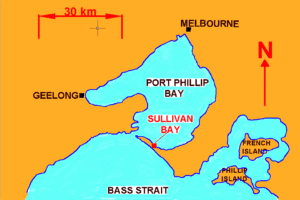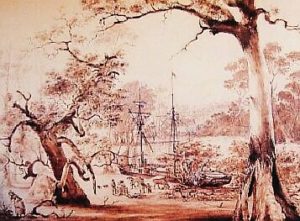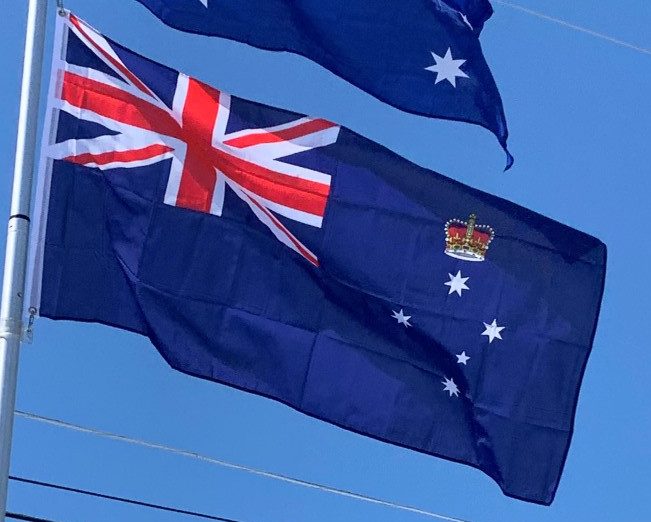A full description of Murray’s and Flinders’ discoveries, together with King’s thoughts on settlement, but not Grimes’ report, reached England just as HMS Calcutta was being prepared to send a shipload of convicts to Sydney. In February 1803, Lord Hobart the Secretary of State changed the destination to Port Phillip.
The party entered Port Phillip on 9 October 1803 and chose a site at Sullivan Bay near present-day Sorrento.

Collins was soon disappointed with the area. Reports from exploring parties led by Lieutenant James Tuckey and surveyor George Harris described strong currents, sandy soil, poor timber, swampy land and scarce fresh water. They also clashed with the Wathaurung people near Corio Bay, killing their leader – the first Aborigines known to have been killed by settlers in Victoria.
Collins reported his criticisms to Governor King, who supported him and recommended moving the settlement.
The brief settlement at Sorrento achieved little and left only a few relics for modern tourists to observe. Collins has been criticized for not investigating the bay thoroughly, in particular, the northern head with its fresh-water river, and for being too hasty in his condemnation of the bay. The site of the settlement is now a reserve incorporating four graves from the period.
For the next thirty years a few sealers and whalers rested on the southern coast of New South Wales.
1834 Permanent Settlement:
Victoria’s first successful British settlement was at Portland, on the west coast of what is now Victoria. Portland was settled on 19 November 1834 by the Henty family, who were originally farmers from Van Diemen’s Land (Tasmania). When Major Thomas Mitchell led an expedition to the region from Sydney in 1835, arriving at Portland in August 1836, he was surprised to find a small but prosperous community living off the fertile farmland.
Melbourne was founded in 1835 by John Batman, also from Van Diemen’s Land and quickly grew into a thriving community, although at great human cost to the original inhabitants. Its foundation was the result of an invasion of wealthy squatters, land speculators and their indentured servants (including ex-convicts) who arrived from 1835, in a race with one another to seize an ’empty’ country. The British Crown and colonial governments did not recognize prior Aboriginal ownership of their lands, waters and property, in spite of claiming that Aborigines fell within the protection of the law as British subjects.

Separation From New South Wales:
The first petition for the separation of the Port Phillip District (or ‘Australia Felix‘) from New South Wales was drafted in 1840 by Henry Fyshe Gisborne and presented by him to Governor Gipps. Gipps, who had previously been in favor of separation, rejected the petition.
Agitation of the Port Phillip settlers continued and led to the establishment of Port Phillip District as a separate colony on 1 July 1851. The British Act of Parliament separating Port Phillip District from New South Wales, and naming the new colony “Victoria” (after Queen Victoria) and providing it with a Constitution, was signed by Queen Victoria on 5 August 1850. Enabling legislation was passed by the New South Wales Legislative Council on 1 July 1851. This was formally the founding moment of the Colony of Victoria, with separation from New South Wales established by section 1 of the 1851 Act. La Trobe became the new colony’s first Lieutenant-Governor.
